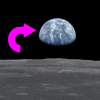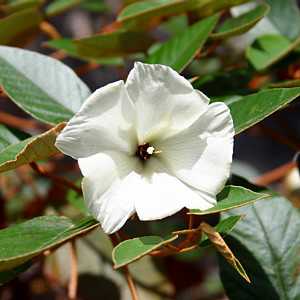
Where is St Helena?
How to find us on a map
In the universe, the Milky Way is a tiny fragment. Within this fragment, the solar system is an infinitesimal speck. Of this speck our planet is a microscopic dot. On this dot, …{c}
⏱ QUICK READ
St Helena is in the South Atlantic Ocean, approximately 1,900Km west of the Angola/Namibia border. There is more relevant location information on this page, and you may also want to see the page Getting Here.
SEE ALSO: Now you know where; now how do you get here? Also, How Small Is St Helena?.
The Island of St. Helena is only a speck on the map{d}
St Helena’s map coordinates are 15°55’24.3”S; 5°43’3.5”W{1} - but you’ll need quite a large-scale map! St Helena is only 16 by 8 kilometres, or 121 km² (see our page How Small Is St Helena? to understand this better), which makes it one of the world’s smallest inhabited islands.
It has population of around 4,400 people{2} and was discovered in 1502 by the Portuguese. The currency is the St Helena Pound (SHP) and the international telephone dialling code is 290. Our timezone is UTC±00:00.
It’s hard to think of an isolated speck of land more synonymous with inaccessibility than St Helena.{f}
Actually it seems St Helena is not (quite) where we thought it was… and may have been known before it was actually discovered.
Where in the world is St Helena?
This used to show a Google Map™, but Google™ now charges for including its maps on a site, even educational not-for-profit websites such as this one{3}. We can’t afford this, so you’ll just have to follow the link here to see the map. |
Distance from South Africa: Such a tarnation one that even the most enterprsing of our subterranean engineers are agreed on the absolute futility of any tunnelling operations{g}


{h}
You could also see…
The island on what3words.com: (Jamestown)
It has been suggested that one way to find St Helena is to just find Brasãlia and go east until you hit the island. Cursory inspection of a map might suggest this to be the case but actually Brasãlia is at 15°47“38”S and we are at 15°55’24.3”S so, by our calculations, you would miss St Helena by around 2,250Km. So much for that plan…☺
If searching for information about St Helena on the Internet you might first want to check our island’s correct name.
And did you know there was once thought to be a second St Helena, side-by-side with us in the South Atlantic? Check out our page Two St Helenas? to learn more.
1929:
St. Helena lies in latitude 15.55° South and longitude 5.42° West{9}. It is about 950 miles due south of the Equator, 4,000 miles from England, and 1,700 miles from Cape Town. The voyage from England occupies from 14 to 17 days, and from Cape Town from five to six days.
The area of the island is 47 square miles. The population is about 3,800, of whom about 1,500 live in Jamestown, the port and only town in the island.{i}
Our position in mid-Atlantic is a contributory factor in our exceptionally high air-quality.
Great Globe
In Dorset, UK, in a place called Durlston Country Park, is found the ‘Great Globe’, one of the largest stone spheres in the world. Carved in 1887 from local Portland Stone, it measures 30m in diameter and weighs 40 tons. And it features St Helena! Zoom in on the photograph below to see us…
If you ask Microsoft Copilot about St Helena it often begins its response with St Helena, a volcanic island adrift in the South Atlantic Ocean…. Now as far as we know, we are not adrift - we believe our location to be pretty-much fixed (albeit not (quite) where we thought it was…) apart from a cm or so per year of continental drift, but maybe Microsoft Copilot knows better? If it’s right, and given that the prevailing wind blows almost exclusively from the south-east, it would only be a matter of time before we reached the east coast of Brazil. Let’s hope not - that’s hurricane territory!☺
First Map
The first world map we can find that shows St Helena is by Abraham Ortelius - his ‘Theatrum Orbis Terrarum’ from 1570 (though if you know of an earlier example please contact us{4}). This demonstrates that the claim the Portuguese tried to keep St Helena a secret is untrue (or they failed!) - supported by the existence of German Valentim Fernandes’ 1506 map of St Helena.
Until a reliable way of establishing Longitude at sea was established (in the 18th Century) the usual way to locate St Helena was to get to latitude 16° and then sail east or west until the island was sighted! Of course, it mattered if you went east and St Helena was to your west…
Note also that, around 80 years later and for the following sixty years or so, map makers started showing two St Helenas on their maps!

Heinrich Scherer’s 1702 map of the globeⒾ is also worth studying, and additionally features both St Helenas (see extract, right)!
Other St Helenas
If you do a search on Google™ for ‘Saint Helena’ (or ‘St Helena’, or ‘St. Helena’ - Google™ isn’t fussy) you will discover:
A city called Saint Helena in the Napa valley area of California
An area of South Carolina called ‘Saint Helena Island’ (though it isn’t actually an island)

St. Katherine’s Church BellA suburb of Melbourne, Australia called ‘Saint Helena’, so named because it was settled by one Anthony Beale (but not Governor Anthony Beale - this one was just paymaster for The East India Company), who had previously lived on our island before migrating to Australia in the 1830s. The bell in the churchyard of St. Katherine’s Church - which Beale built and named after his late wife - is claimed to have come from St Helena, though how he obtained and re-located it is a mystery. Maybe it came from the old Country Church?{5}
An island in Moreton Bay, on the coast of Queensland, Australia, that was formerly a penal colony (sound familiar?)
A mudflat in Scotland, UK
A St Helena Road in London (SE16){10}
…and probably a few others. And don’t get us started on the world’s many other non-place ‘St Helena’s… St Helena’s Caravan Park in Leeds, UK, for example? Then there are the many ‘Helena’s, like Helena, Arkansas, USA.
It would be nice if each of these had a unique name. For one thing it would make searching for St Helena information on the Internet more reliable - we find the best search string to be:
Saint helena [subject] -california -napa -carolina -queensland -melbourne
…which is rather a lot to type! If you have other suggestions please contact us.
Also, if you search online for pictures of (our) St Helena, that’s not always what you get - as shown on our page Do they mean us? (images below).
From far, far away
If, somehow, you are viewing this page from a planet orbiting around a star system in a galaxy far, far away from ours, here is some additional information that might help you locate our planet, Earth, on which the directions above are based.
Our planet is the 3rd rock from the Sun in our solar system. This diagram shows which is us and also the others on the system which you might also want to explore, particularly of you feel at home with lakes of frozen methane or surface temperatures that would melt pretty-much anything built on Earth:

Our solar system in our Galaxy

Our galaxy in the Universe
Of course, you also have to find our solar system within our Galaxy (which, by the way, we call the Milky Way). The diagram (far right) might give you a general idea. Then look for the system that looks like the above.
Lastly, if you need help to find our galaxy we’re sorry but we really can’t help you much with that, though the diagram (near right) may be a start. Frankly, if you have the technology to resolve an HTML webpage from at least 2.5 million light-years away (our nearest major galaxy, Andromeda, but you may, of course, call it something different) and translate it into whatever communications method you use - as you clearly have done - then we reckon you probably have the advanced technology necessary to find our galaxy.
PS: when you’ve located our planet, don’t forget to follow the instructions above to find St Helena; otherwise you’ll end up landing in America like all the other aliens do.
How to get here
The many ways to get to St Helena are discussed on our page Getting Here.
Shipping Lanes
As can seen from the 1886 map that can be downloaded hereⒾ, St Helena used to be an important stop en-route to and from the Cape. The 1946 Admiralty map below shows the same thing (though rather less extravagantly):
Today this is no longer the case. The map below is taken from live-tracking website www.marinetraffic.com, showing all ships in the south Atlantic as at 12:30UTC±00:00 on 15th February 2017. The red lines (which we added) show the primary ship routes, going to the north and south of St Helena (blue dot) - this explains why ship-calls decreased when sail gave way to steam (more here).
Read More
Below: Not where we thought it was… Is situated…
Not (quite) where we thought it was…
Press Release issued by the Government of St Helena 25th January 2018{7}
St Helena moves 732 metres on the map
St Helena Government is in the process of creating a new detailed topographic map of St Helena, the first update since 1990. Since then, a lot of things have changed, not just a new airport being built with regular scheduled flights and the imminent decommissioning of the much loved RMS.

In 1990, Satellite Navigation Systems (‘SatNavs’) were still an expensive novelty, mostly used by the military. Nowadays, GPS (Global Positioning System) receivers are everywhere, very inexpensive and almost everyone with a smart phone has the ability to find their position with an accuracy of about five metres anywhere on the planet. The 1990 series St Helena 1:10,000 and 1:25,000 topographic maps are based on the old Astro DOS datum setup by the UK’s Directorate of Overseas Surveys (DOS) in 1971. Back then, GPS did not exist and far less precise astronomical methods were used to work out positions in the open ocean like St Helena Island. It turns out that the Astro DOS datum in St Helena is 732 metres off from truth (today’s GPS position). This means that anyone using a GPS in default setting mode with the 1990 series maps will plot their position 732 metres out, which on St Helena could be a serious mistake.
Of course, if you select the Astro Dos 71/4 option in GPS receivers this error goes away but this isn’t the ideal situation for safety reasons. In the ideal world your GPS position in default mode should match up exactly with the map, so this has necessitated preparation of new maps by SHG. The construction of the new airport, associated roads and port facilities has also warranted the update as well of course.
During 2015 and 2016, geodetic surveyors led by Murray Henry from SHG re-surveyed the Island visiting many of the original 1971 trigonometric stations and also surveying all of the post box walk tracks. The surveyors used state-of-the-art geodetic grade GPS receivers to get centimetre accurate positions of the trigonometric stations. The new datum is called the St Helena Geodetic Datum 2015 (SHGD2015) and is directly compatible with the default GPS datum which is called WGS 84.
A geodetic consultant from Australia, Richard Stanaway, who first visited St Helena as a tourist in 2009 was engaged to compute the new coordinates and work out the difference with the old coordinates. These transformations were checked using different GIS (Geographic Information Systems) to validate them with the latest satellite imagery over St Helena.
St Helena hasn’t really moved 732 metres; that is just the error of the old datum, but the Island is moving a few centimetres each year as she drifts away from the Mid-Atlantic Ridge. The GPS base station at Longwood run by the Jet Propulsion Laboratory (JPL) of NASA can monitor this tectonic motion precisely. St Helena is a key station in the international monitoring network.
The full report on this project, entitled ‘Geodetic Datum Modernisation for St Helena’ is available on the Government of St Helena website here: www.sainthelena.gov.sh/government/public-information/attachment/geodetic_datum_modernisation_for_st-helena_v3-final.
We were going to make a copy of the report available as a download but (for no apparent reason) the Government of St Helena wouldn’t let us…
St Helena is situated…
Just about everything you read about St Helena begins with some variation of this:
St Helena is situated at a latitude 15° 55’ south and longitude 5° 45’ west{9} in the South Atlantic Ocean. The island is volcanic in origin and almost everywhere rugged and mountainous, rising to a peak of 820m high. The island is approximately 16km long and 10km wide, and is some 1,600km off the West African coast. Its nearest neighbour is the island of Ascension 1,100km away. It is about 7,250km from the UK and 2,700km from Cape Town. Its capital, Jamestown, is on the north leeward shore. Although within the tropics St Helena’s coastal climate is kept mild year-round by the south-east Trade Winds. It is warm, damp and equable.
Credits:
{a} Tourist Information Office{b} www.marinetraffic.com (Annotated){c} Bertrand Russell, in ‘Dreams and Facts’{d} Seamus Talbot-Phibbs, in ‘A guide to some walks on the island of St Helena’{e} 2021 Census, taken 7th February 2021.{f} Lonely Planet#, ‘The allure and attractions of St Helena’, 4th September 2015{g} Boer PoWs, quoted in the St Helena Magazine, January 1934{h} Adapted from an image published on the Wikipedia{i} The ‘Blue Book’, 1929{8}
Footnotes:
{1} Location of Jamestown according to latest GPS data.{2} The total resident population on 7th February 2021 was 4,439, 4,118 of which were St Helenian and the remainder visitors, temporary workers, etc.{e}{3} Clearly they aren’t making enough money - only $94.269Bn in 2024.{4} Strictly, St Helena is shown on Mercator’s 1569 map, but it is hidden behind a legend box (an indication of our perceived importance!) so we think that doesn’t count. [Image, right]

{5} Search on Google Maps™ for Anthony Beale Reserve and see also en.wikipedia.org/wiki/St_Helena,_Victoria.{6} The four ‘Wirebird’ publications should not be confused.{7} Not, as you might have assumed, 1st April…{8} @@RepDis@@{9} Actually at 15°55’24.3”S; 5°43’3.5”W{1}.{10} Of course, there are probably many ‘St Helena Road’s, most probably named after the mother of Emperor Constantine, but we know this one is named after our St Helena because the area used to be the site of the ‘St Helena Tea-Gardens’, an open space where people could sit and sip their tea while contemplating nature, named in the early 19th Century after our island because of our (then) military importance. The tea garden seems to have been replaced by housing sometime around the beginning of the 20th Century, with only the road name remaining. For more see ‘Wirebird’, the magazine of Friends of St Helena{6} #33, Autumn 2006.
@@FNCRRETADV@@
